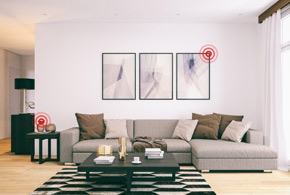If you are concerned about someone invading your privacy or the privacy of your business, a hidden camera detector or audio bug detection device may be the solution to your worries.
With hidden cameras being able to be placed in anything from a DVD player to a light switch to even a smoke detector, it is becoming increasingly important for people to protect themselves against illegally placed spy cameras. This also is true for audio bugs, which are used to eavesdrop on people without their consent.
We carry a wide selection of hidden camera and audio bug detectors to help you protect your privacy.
Who is Using Camera and Bug Detectors:
- Law Enforcement
- Private Investigators
- Individuals Wanting to Protect their Privacy
- Business Executives
- Retail Stores
Frequently Asked Questions about Camera and Bug Detectors:
How can these detectors detect a hidden camera?
There are two types of detection methods for finding hidden cameras. The first detection method is often the most effective, because it can detect any hidden camera, wired or wireless, whether it on or off, and as small as a pinhole This first detection method involves using a infrared viewfinder with a flashing LED light. This light will reflect brightly off the curvature of any camera lens, no matter the size.
The second method of detection is wireless video transmission detection, in which the hidden camera detector detects the video signal being transmitted through the air. This is only effective in finding wireless hidden cameras, and will not be able to locate wired or self-recording hidden cameras.
What is an audio bug, and how can I find one?
Audio bugs are any devices that are illegally eavesdropping on private conversations without consent. These audio bugs can be as small as a dime, and transmit your conversation up to 500 feet away. Finding audio bugs can be difficult, but with the help of an audio bug detector, you will be able to help locate these devices.
An audio bug detector works by detecting the audio transmission as it is being sent through the air. By detecting this frequency, and adjusting the sensitivity on the detection device, you can hone in on the exact location of the bug.















